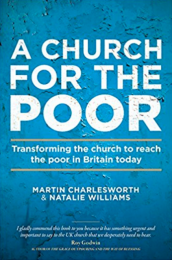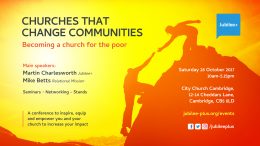 How ‘accessible’ is your church?
How ‘accessible’ is your church?
If someone from a local run-down housing complex in your area walked into your church would they come a second time? Many churches have become so ‘middle class’ that they represent an unwelcoming environment for those from different socio-economic levels of society.
The authors of ‘A Church for the Poor’ come themselves from very different backgrounds. Martin Charlesworth was educated at a private boarding school whereas Natalie received free school meals. In their very disparate backgrounds lies their authenticity and credibility in joint-authoring such a book as this, a book that fills a unique place in the plethora of books about how to build church in our generation.
Analysis
Presented in two distinct parts this book first analyses the causes of poverty and gives a Biblical perspective of the poor. The authors point out that ‘All New Testament churches focussed on remembering the poor in whatever way was most relevant to them. It was a priority not an option.’
They go on to analyse some of the characteristics of our current culture in the UK which contribute to the division between rich and poor.
Drawing extensively from their own stories Martin and Natalie illustrate and corroborate their findings. I was particularly helped by Natalie’s experiences which I found informative and enlightening, my own background being closer to Martin’s.
The way forward
The second part of the book addresses the core topic head on – what does a church for the poor look like and what adjustments should we be making to make ourselves accessible and relevant to this section of society?
In this part of the book the authors become more prescriptive, suggesting the issues in our churches that need addressing if we are to see those from poorer environments come into our churches. If we believe the gospel is for all men, and that God has a special heart for the poor, we have no option but to consider seriously what the authors suggest. ‘We can conclude’, they write, ‘that the church is designed to be a multicultural community where there is space for all sorts of people to belong and flourish.’
A ‘must read’ book
This is one of those ‘must read’ books, particularly by all church leaders. It needs to be taken seriously if we are to fulfil our commission to make disciples of all peoples in our generation. There are two ways to obtain it.  Either buy it here, or come to the Churches that Change Communities Conference this weekend in Cambridge and pick up your copy there.
Either buy it here, or come to the Churches that Change Communities Conference this weekend in Cambridge and pick up your copy there.
